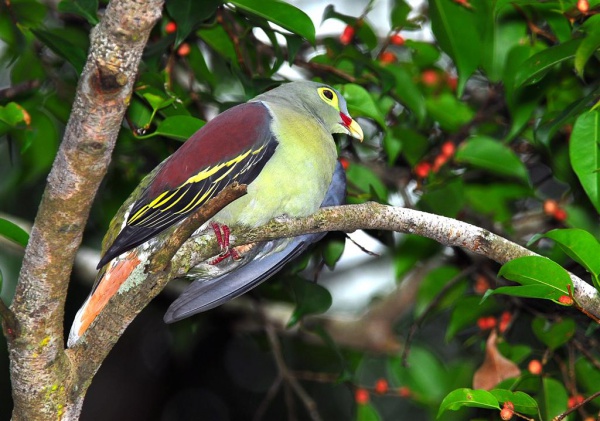Facts About Green pigeon
Treron, commonly known as green pigeons, is a captivating genus within the Columbidae family. These birds, celebrated for their vivid green plumage, inhabit regions across Asia and Africa. Their distinctive coloration stems from carotenoid pigments absorbed from their diets.
The Treron genus comprises 29 species, predominantly frugivorous, feeding on fruits, nuts, and seeds. They typically reside in arboreal habitats within various wooded environments. Notably, green pigeons can be distinguished by tail length and exhibit sexual dimorphism, wherein males and females display different feather coloration.
In terms of social behavior, green pigeons are generally observed in flocks but can also be found in mating pairs. They favor wild habitats distant from human activity, though some species have adapted to peripheral urban areas. For nesting, these birds construct their nests high up in trees using twigs and branches. Their green plumage aids in nest camouflage. The female typically lays eggs 4-5 days after nest construction, with incubation lasting 15-17 days. Both parents partake in rearing the chicks.
The genus Treron was first described in 1816, with the thick-billed green pigeon designated as the type species. The name "Treron" is derived from the Ancient Greek word for "pigeon" or "dove." Notable species within this genus include the cinnamon-headed green pigeon, the pink-necked green pigeon, and the thick-billed green pigeon, each distinguished by unique characteristics and regional distributions.

 Indonesia
Indonesia